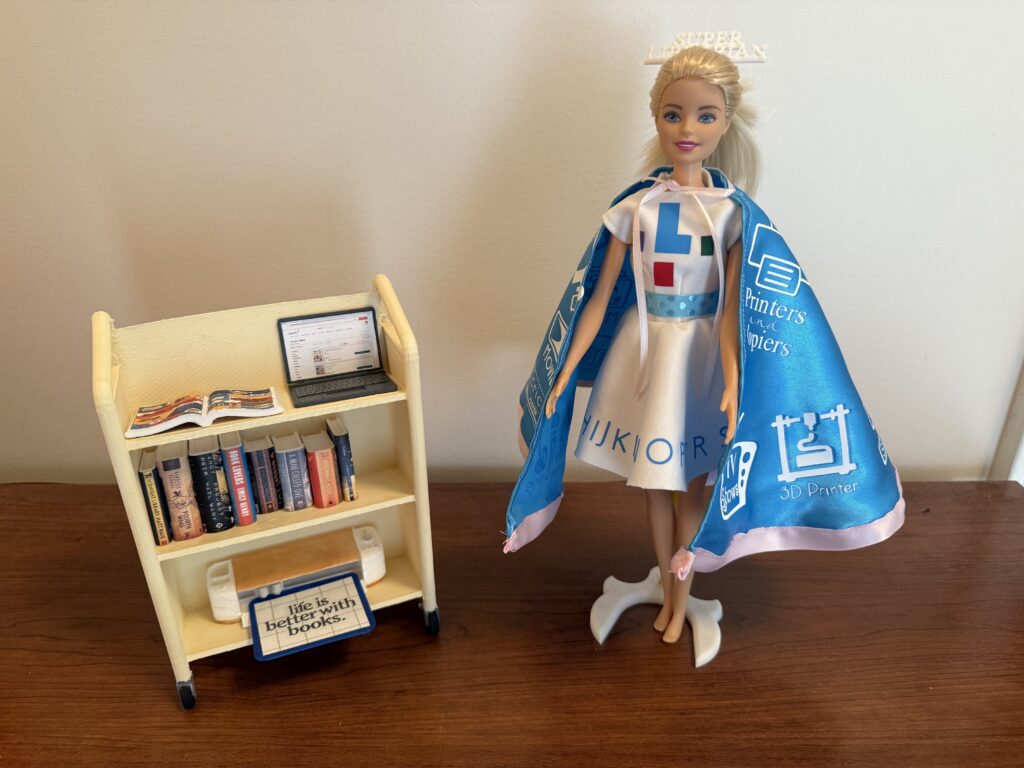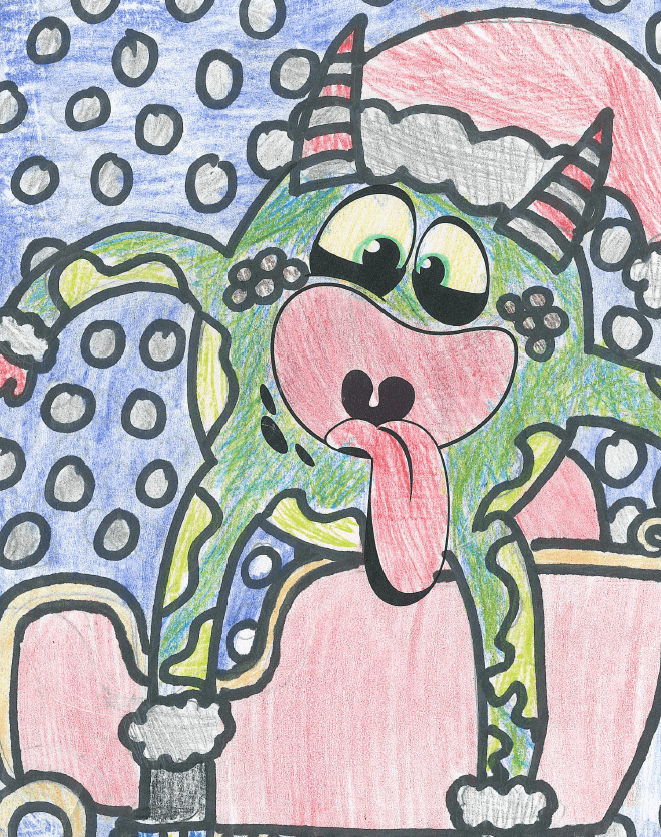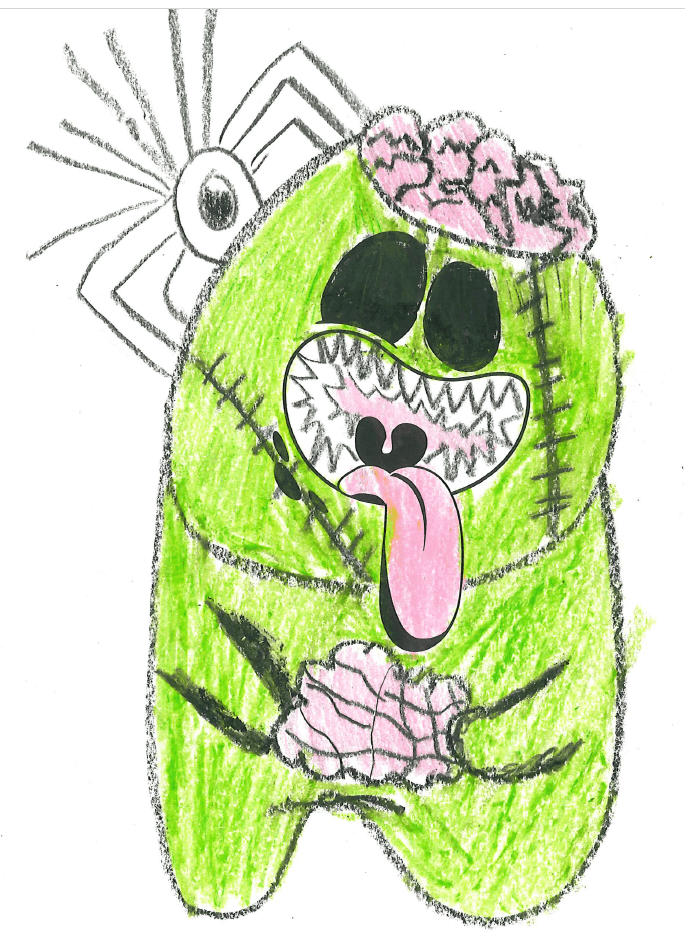Picture it: a dusty thrift store bin. A plastic action figure, mildly scuffed, moderately poseable, entirely overlooked. Then came a library card and a creative Maker Educator with a cool new project: half craft, half mad science, all postmodern pastiche. Sprinkle in some polymer upgrades, a dash of soldering iron, a glob of hot glue—and of course, a glitter cannon. The transformation wasn’t just mechanical, it was philosophical. Super Librarian Barbie was born.
That’s me! Now can I please stop referring to myself in third person?
Formerly forgotten—or at best, maligned and misunderstood—now a lifelong-learning empowered superhero, I tirelessly advocate for universal literacy, creative freedom, digital responsibility, and open access to ideas (particularly those deemed inconvenient). I have a cape that’s lowkey gorg, a custom belt clip for my library card that’s stoned for the gods, and a passion for storytelling of high literary merit.
So when the ORL asked if I wanted to recommend a few reads? I didn’t just say yes—I consulted my Lit Lives On spreadsheet and double-checked the handwritten margin annotations (in cursive and my fav pink ink: Decolonial Flamingo) to narrow the list. Let’s begin with four that left a mark both literary and personal.
The Bluest Eye by Toni Morrison
Morrison’s debut is a lyrical, devastating masterwork. Set in 1940s Ohio, it explores internalized racism and childhood trauma through the heartbreaking story of Pecola Breedlove. This novel is as much about language as it is about loss—and Morrison wields both with ruthless, poetic control.
This Book Is Gay by Juno Dawson
Part memoir, part manual, this book is witty, wise, and unflinchingly honest. Dawson breaks the fourth wall, talks directly to readers, and deconstructs outdated assumptions with humour and empathy.
All Boys Aren’t Blue by George M. Johnson
A beautiful hybrid of memoir and manifesto, Johnson’s writing is tender, vivid, and defiant. With essayistic chapters and personal anecdotes, they reflect on Black masculinity, queerness, and chosen family. The voice is literary but deeply conversational.
Push by Sapphire
Told in the raw, fractured vernacular of its narrator, Precious, Push is a gut-wrenching act of literary resistance. The novel doesn’t just tell a story—it becomes the story. As Precious learns to read and write, the prose evolves, mirroring her intellectual and emotional awakening.
But you know what genre I’ve been reading a lot of lately?
Graphic novels.
I know, I know—some literary circles still turn up their noses at the format. The old “serious literature can’t have pictures” argument. To which I say: nonsense. Graphic novels are literature and visual art. They’re architecture. Design. Memoir. Theory. The poetry of language, ink and line.
The complexity of graphic novels lies in layering meaning—through words, panels, white space, colour, pacing. The genre has long since left its cape-and-kaboom phase (nothing against cape-and-kaboom, some of my best friends are from there) and entered the literary canon with nuance and force. Here are four that prove the case, and they’re all available right here at the ORL…and will continue to be, if superheroes like me have our way.
Gender Queer by Maia Kobabe
This coming-of-age graphic memoir uses delicate linework and dreamlike sequences to explore gender identity and self-understanding. Kobabe’s storytelling is introspective, often allegorical, and emotionally precise.
Fun Home by Alison Bechdel
A layered, recursive memoir that dissects Bechdel’s relationship with her closeted father through literary allusions, intricate layout design, and razor-sharp introspection. This is a graphic novel that openly converses with Joyce, Proust, and Camus—not out of pretension, but necessity.
Blankets by Craig Thompson
Emotionally sprawling and visually sweeping, Blankets combines coming-of-age, religious doubt, and first love in a format that reads like visual poetry. Thompson’s use of negative space and panel rhythm elevates the narrative’s intimacy. Every snowflake, every breath feels purposeful.
Flamer by Mike Curato
Set at a summer camp in the 1990s, Flamer captures internalized homophobia, identity confusion, and adolescent longing with vulnerability and restraint. The use of greyscale with sparing flames of red conveys both suppression and desire. It’s a deeply literary work disguised as a teen graphic novel.
Summary for all you freethinking literary superheroes?
I love books that challenge form, expand empathy, and speak the unspeakable. And I especially love when they do it beautifully.
It’s incredibly fortunate, really—living in a place where you’re free to read what moves you, question what unsettles you, and walk out of a library with a bookbag overflowing with diverse ideas. Just imagine if that wasn’t allowed.
Anyway. See you in the stacks. Bring a cape if you’ve got one, but it best be loaded with hidden meaning, witty…and very pretty.
—SLB




